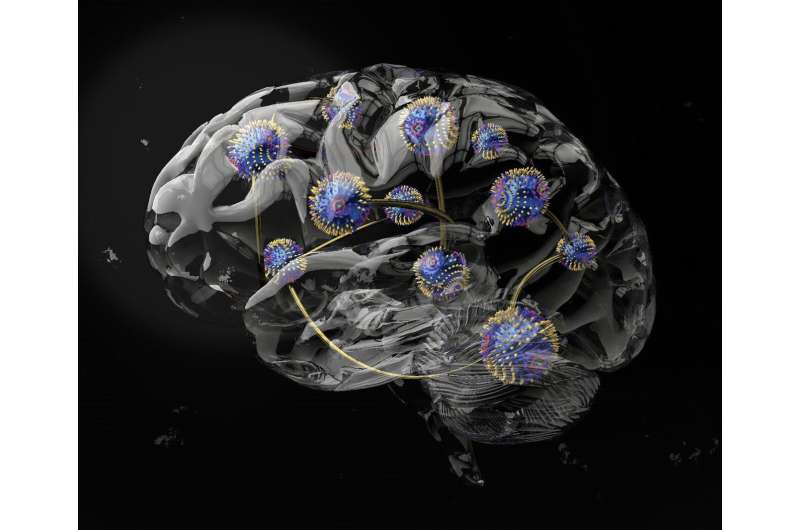This article has been reviewed according to Science X's editorial process and policies. Editors have highlighted the following attributes while ensuring the content's credibility:
fact-checked
peer-reviewed publication
trusted source
proofread
Twisted magnets make brain-inspired computing more adaptable

A form of brain-inspired computing that exploits the intrinsic physical properties of a material to dramatically reduce energy use is now a step closer to reality, thanks to a new study led by UCL and Imperial College London researchers.
In a new study, published in the journal Nature Materials, an international team of researchers used chiral (twisted) magnets as their computational medium and found that, by applying an external magnetic field and changing temperature, the physical properties of these materials could be adapted to suit different machine-learning tasks.
Such an approach, known as physical reservoir computing, has until now been limited due to its lack of reconfigurability. This is because a material's physical properties may allow it to excel at a certain subset of computing tasks but not others.
Dr. Oscar Lee (London Center for Nanotechnology at UCL and UCL Department of Electronic & Electrical Engineering), the lead author of the paper, said, "This work brings us a step closer to realizing the full potential of physical reservoirs to create computers that not only require significantly less energy, but also adapt their computational properties to perform optimally across various tasks, just like our brains.
"The next step is to identify materials and device architectures that are commercially viable and scalable."
Traditional computing consumes large amounts of electricity. This is partly because it has separate units for data storage and processing, meaning information has to be shuffled constantly between the two, wasting energy and producing heat. This is particularly a problem for machine learning, which requires vast datasets for processing. Training one large AI model can generate hundreds of tonnes of carbon dioxide.
Physical reservoir computing is one of several neuromorphic (or brain inspired) approaches that aims to remove the need for distinct memory and processing units, facilitating more efficient ways to process data. In addition to being a more sustainable alternative to conventional computing, physical reservoir computing could be integrated into existing circuitry to provide additional capabilities that are also energy efficient.
In the study, involving researchers in Japan and Germany, the team used a vector network analyzer to determine the energy absorption of chiral magnets at different magnetic field strengths and temperatures ranging from -269 °C to room temperature.
They found that different magnetic phases of chiral magnets excelled at different types of computing task. The skyrmion phase, where magnetized particles are swirling in a vortex-like pattern, had a potent memory capacity apt for forecasting tasks. The conical phase, meanwhile, had little memory, but its non-linearity was ideal for transformation tasks and classification—for instance, identifying if an animal is a cat or dog.
Co-author Dr. Jack Gartside, of Imperial College London, said, "Our collaborators at UCL in the group of Professor Hidekazu Kurebayashi recently identified a promising set of materials for powering unconventional computing. These materials are special as they can support an especially rich and varied range of magnetic textures."
"Working with the lead author Dr. Oscar Lee, the Imperial College London group [led by Dr. Gartside, Kilian Stenning and Professor Will Branford] designed a neuromorphic computing architecture to leverage the complex material properties to match the demands of a diverse set of challenging tasks. This gave great results, and showed how reconfiguring physical phases can directly tailor neuromorphic computing performance."
The work also involved researchers at the University of Tokyo and Technische Universität München.
More information: Oscar Lee et al, Task-adaptive physical reservoir computing, Nature Materials (2023). DOI: 10.1038/s41563-023-01698-8


















